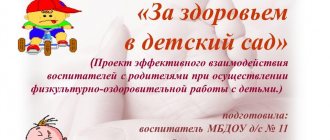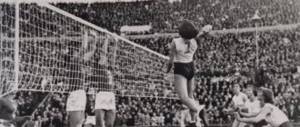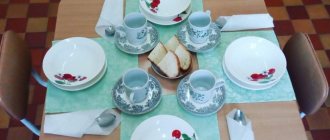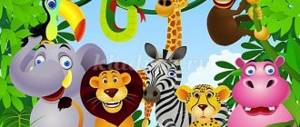Organization of active recreation in a preschool educational institution
(Guidelines)
Purpose: to give an idea of active recreation for children, its importance for the development of children in preschool age; to instill in educators and parents a desire to use various forms of organizing and conducting active recreation for children.
Plan.
- Organization of active recreation in a preschool educational institution.
- Health days.
- Sports holidays.
- Physical education.
Literature.
- V.N. Zamonin. Raising a preschool child. "Vlados", 2004
- N.V. Sakratova. Modern technologies for preserving and strengthening children's health. "Childhood-Press", 2004
A lack of motor activity has a negative impact on the development of the body and often contributes to the occurrence of significant disorders in various organs and systems, especially in childhood. As a result, the child's overall development may be delayed. Physical education and adaptation capabilities decrease, morbidity increases.
In this regard, a clearly organized daily routine for preschoolers, the correct alternation of classes and active recreation, acquires special importance.
Active rest involves a change in mental and physical activity, i.e. includes types of physical exercise. Movements help maintain and strengthen the child’s health by “reloading” his body with the amount of muscle activity required for his age, and also helps prevent neurotic conditions associated with overexertion of the child’s body.
Forms of active recreation for preschoolers include: hiking. Physical education holidays, physical education leisure, health days.
Proper organization of all types of active recreation in combination with other forms of educational work helps to establish an appropriate motor mode. Which helps to improve the functional capabilities of the child’s body, development and improvement of motor qualities. The motor activities, games, and entertainment used give children great joy, lift their spirits, and provide emotional release.
The combination of different forms of active recreation is based on the material of those games. Tasks and actions that are well known to children and do not require additional learning. In order to diversify them, you can use different options, change the conditions, etc.
Health days.
Health days provide for the prevention of overwork in children, maximum satisfaction of their natural need for movement, and enrichment of independent motor activity.
Pedagogical requirements for the organization.
Health Day is held at least once a quarter, starting from the second youngest group.
Health day is a day of rest. Games and entertainment. All educational classes are cancelled, and educational work is aimed at creating conditions for active recreation for children.
At the beginning of each quarter, it is recommended to plan the content of the health day taking into account the time of year (it is advisable that during the warm period children spend the whole day outdoors).
When setting specific dates for this event, it is necessary to take into account such forms of work as physical education holidays and vacations. They should not be combined - after all, health day is held only four times a year.
On health days, outdoor games are held. Sports exercises and entertainment, hiking and skiing, simple tourism. All these physical education and health activities help to ensure that children are able to put their accumulated experience into practice: perform exercises from the basic movements section, use elements of sports games. It is very important to develop among schoolchildren an interest in organizing games and simple competitions with their peers on their own initiative. Encourage the desire to achieve better results when performing a variety of physical exercises, in outdoor games, and relay races.
In addition to physical education and recreational work, health days also include various forms of labor activity (taking into account the age of the children), for example, cleaning the area, repairing toys, crafts made from snow (slides, ice paths, snowmen). Work in the flower garden.
In younger preschoolers, the predominant movement is walking, running, squatting and bending. More complex movements - jumping, throwing, climbing - occupy a significant place. That is why it is recommended to include outdoor games in the content of health days, which involve jumping, climbing, throwing, for example:
With jumping - “On a level path”, “Catch a mosquito”, “From bump to bump”;
With crawling and climbing - “Mice in the Pantry”;
With throwing and catching - “Who will throw the bag further”, “Get into the circle”, “Knock down the pin.
When organizing and directing children’s games, one should take into account the nature of the preceding and subsequent activities. For example, outdoor games are not advisable before naps, or immediately after meals. It must be remembered that the most favorable state of the physiological systems of the child’s body is ensured by uniform physical activity, a combination of movements of varying intensity. On health days, several outdoor games (from four to six) are held throughout the day, each lasting 6-10 minutes. All children or small subgroups can participate in the game.
The enrichment of motor activity in primary and secondary preschool age is facilitated by taking a variety of physical education aids and equipment for walks. In addition to standard aids (hoops, jump ropes, skittles, balls), it is advisable to use portable boards, ladders, light boxes, from which children can, if desired, create sports complexes for performing certain movements.
Great opportunities for intensifying movements are provided by walks outside the kindergarten site - to a park, square, or stadium. To the river. They are held in the first half of the day, their duration is 20-30 minutes one way (total duration - 1-1.5 hours). In addition to the teacher, the children are accompanied by a nurse or other teacher and parents. You should prepare in advance for a walking walk - choose a place with natural obstacles: slides, bridges, stumps, so that children can satisfy their needs for a variety of movements (running, jumping, jumping, climbing).
The teacher should not restrain the children’s desire to run and play in nature.
When holding a health day, special attention should be paid to physical activity in the afternoon.
During this period, it is advisable to include physical education leisure in the regime. Its duration should not exceed 20-30 minutes. Positive emotions received during leisure time reduce children’s fatigue and arouse interest in performing various movements.
On Health Day, simple hiking trips are organized for children of senior preschool age. Their goal is to improve basic types of movements (walking, running, climbing, throwing, jumping) and developing physical qualities. Walking to a place of walk, often in difficult conditions for children, influences the formation of such character traits as endurance, discipline, a sense of camaraderie, and responsibility. These walks also have a valuable influence on the ethical education of children. They evoke positive emotions and a joyful mood, teach you to see and feel the beauty of the world around you. The hardening and health-improving effect of hiking is especially significant. Children get used to the effects of various changing meteorological conditions and learn to overcome difficulties.
During the warm period, the total duration of hiking should not exceed 2.5 - 3 hours, with a break of at least an hour and a rest of 5-10 minutes after every 25-30 minutes of walking.
Children are accompanied by at least two or three adults during the hike.
Every adult should be able to provide first aid to children if necessary.
Sample plans for health days for different age groups.
Junior group
(Winter)
The first half of the day.
Reception of children. Independent motor activity on site. Sledging. Outdoor games6 “Run to me”, “Snowflake and the wind”.
Morning exercises at the site.
After breakfast. A walk in the kindergarten area. Bird watching. Outdoor game "Sparrows and a car." Sledging. Game "Jumpers". Pair skating.
Afternoon.
Physical education.
On a walk: sledding. Fun exercises: “Polar bears”, “On a snow bridge”. Outdoor game “The little white bunny is sitting.”
Middle group.
(Winter)
The first half of the day.
Reception of children. Sledding on the site. Game "Jumpers". Outdoor game “Find the Snow Maiden”.
Morning exercises at the site.
After breakfast.
A walk in the kindergarten area. Outdoor games “Beware - I’ll freeze!”, “Snowflakes and the wind”. Observation of birds (crows, sparrows): compare them by size, singing, screaming, whistling; external signs; tracks in the snow. Outdoor game "Sparrows and Crows". Modeling snowmen on the site together with the teacher.
Afternoon.
Physical education.
On a walk: game exercises “Who can knock off the cap faster”, “Hit the target”, outdoor game “Fox in the hen house”. Traveling on skis.
Senior group.
(Winter)
The first half of the day.
Reception of children. free games. Clearing the area of snow, buildings made of snow. Walking and running along a snow bank, jumping off it. Making snowballs. Outdoor game “Two Frosts”.
Morning exercises at the site.
After breakfast.
A walk outside the kindergarten (to the park). Outdoor games: “Homeless Hare”, “Red Nose Frost”.
Fun exercises: “Spin and dance.”
Afternoon.
Independent games for children. Fun exercises: “Tightenings.” Outdoor games: “Blizzard”, “Snow Carousel”. Competition for the best figure: “Ice Lace”.
Preparatory group.
(Winter)
The first half of the day.
Reception of children. Free games. Clearing the area of snow. Games with sleds: “Out of the blue”, “Be the first”, “On the sled!”
Morning exercises.
After breakfast.
Ski trip outside the kindergarten (duration 1.5-2 hours). The children walk part of the way, then put on skis. During rest, outdoor games: “Entertainers”, “Two Frosts”. Game exercises: “Snipers”, “Who’s next”.
On the kindergarten site: buildings made of snow.
Afternoon.
Independent play activity. Games with hockey elements: “Score in the goal”, “Ice”. Sledding in pairs - “Fast sledding”. Outdoor game: “two frosts”.
Sports holidays.
Starting from the middle group, sports festivals are held twice a year (one at the end of summer, the other at the end of winter). The duration of the holiday in the middle group is 45 minutes, and in the senior and preparatory groups - 60 minutes each.
Celebrations are held in the first half of the day on the playground of the kindergarten. To participate in the holiday, it is better to combine parallel groups; if there are no parallel groups, then, depending on the capabilities of the children, you can hold a holiday for each age group separately. When combining contrasting age groups (middle and older), you need to think about physical activity for each age and their active participation in the holiday. It is necessary to take into account that during the festival, public events alternate with competitive exercises for small subgroups.
Approximate schemes for constructing a holiday if the holiday is held for one group:
- Parade of participants, exit to the site. Construction, reconstruction (Poems).
- Demonstration performances of the group (general developmental exercises with objects).
- Competitions: “Who can run between the cubes the fastest”, “Hit the target”.
- A game of great mobility: “Traps”.
- Performing dance moves to music.
- Organized end of the holiday (awarding participants with medals, refreshments can be provided).
If two parallel groups take part in the holiday, then it can be built in the form of a sports competition, where two teams with their own emblem participate, for example, “Christmas tree” and “Snowflake”.
An approximate diagram of such a holiday:
- The ceremonial exit of the teams, the greeting of the teams.
- Competition of captains (questions, answers, tasks of a gaming or competitive nature).
- Performing general developmental exercises with objects.
- Team competitions, games with elements of competition (one or two).
- A game of great mobility.
Forms of organizing physical education leisure can be varied. It is advisable to devote them to the seasons, interesting sporting events (athlete's day, Olympics, etc.), and public holidays.
In primary and secondary preschool age, fairy-tale and literary characters can be introduced into the content of physical education leisure, an entertaining plot can be used, for example: “A walk in the autumn forest”, “The Christmas tree invited us to visit in winter”, “Visiting Mishka”, “ Journey to Africa."
Music has a great emotional impact, so it is advisable to play it during physical education. However, you should be thoughtful about the choice of musical works. So, it is convenient to march to cheerful, energetic music. And perform gymnastic exercises to smooth and rhythmic music. For example, “The Cheerful Waltz” by E. Talicheyeva can accompany an exercise with balls, flowers, and ribbons; “Polka” by P. Tchaikovsky - exercises with throwing and catching balls. To the music of A. Schnittke, it is convenient to jump high, pushing off energetically with both legs. The games are accompanied by light, cheerful, cheerful music, like this. Like the works of T. Lomova “Look”, “Who is faster?”, “Keen Eyes” by Yu. Slonov, etc.
When conducting sports activities in different age groups, educators face certain tasks.
In early preschool age, it is necessary to involve children in all possible participation in collective and individual motor actions, to enrich them with vivid impressions.
In middle preschool age - to teach independent participation in joint exercises, games, entertainment, while encouraging each child to demonstrate their capabilities.
In older preschool age - to develop in children the ability to creatively use their motor experience, in conditions of emotional communication with peers, to teach them to take initiative in a variety of activities.
When selecting the content of physical education leisure in groups of primary and secondary preschool age, it is best to use an entertaining plot. When creating a program, you should remember: the main leisure time (60-80%) should be filled with movements, so that each child has the opportunity to satisfy his inherent motor needs.
When selecting material for children of primary preschool age, it is necessary to provide a frontal form in order to simultaneously include everyone in completing the proposed tasks and games. Besides. You should remember to alternate outdoor games with physical exercises and gaming tasks in order to ensure a change in muscle and emotional stress. For example, after walking on a bridge or throwing, consider an outdoor game with running.
The structure of physical education leisure depends on the topic, assigned tasks and conditions (forest clearing, sports ground, gym).
Children should be familiarized with the rules of behavior during a hiking trip in advance.
It is advisable to conduct the trip in the form of an exciting thematic game or use a pre-developed scenario.
At a rest stop, the teacher can organize active recreation for children (games and exercises in natural conditions, swimming, fun games), relay races, acquaintance with significant events, with representatives of different professions.
In winter, it is recommended to make ski trips lasting up to 2.5 hours. They can be combined with walking over rough terrain and mountain skiing. The distance of the ski trip is 2 – 2.5 km (in two transitions). The teacher needs to familiarize himself with the area in advance, lay a ski track, and outline a resting place.
During ski trips, it is advisable to play games with elements of orienteering (on the ground using map diagrams).
Active recreation of children in kindergarten
Olga Bogdanova
Active recreation of children in kindergarten
In modern society, high demands are placed on a person, on his knowledge and abilities. The influence of various negative environmental factors on the human body is constantly increasing, which lead to deterioration of health, to a decrease in mental and physical potential.
Concern for human health has become a priority throughout the world.
According to the World Health Organization, health is not simply the absence of disease or infirmity, but a state of complete physical, mental and social well-being.
Today the word “physical inactivity”
. Many understand it simplistically - as a lack of movement.
Research suggests that most children today experience “motor deficits.”
, that is, the number of movements is below the age norm.
It's no secret that most of the time is spent in a static position (at the computer, at the table or in front of the TV)
. This increases the static load on certain muscle groups and causes them to fatigue. The strength and performance of skeletal muscles decreases, which entails poor posture, curvature of the spine, delayed age-related development of speed, flat feet, strength and flexibility.
For many years, physical education has been viewed as a unified system of activities aimed at teaching children to control their bodies and help them master such important movements as running, walking, jumping, etc.
Aristotle said: Movement is life. Nothing exhausts and weakens a person more than prolonged physical exposure.
Preschool age is an important period in the formation of a person’s physical health. It is in preschool age that the most favorable time is for developing the right habits, which, in combination with teaching preschoolers how to improve and maintain health, will lead to positive results.
Motor activity is the most important component of the organization and behavior of preschool children. It depends on the organization of children’s , on the level of their motor fitness, on the conditions of social life and on the individual characteristics of the physique, on the functional capabilities of the growing organism.
In our kindergarten, systematic work is carried out to ensure adequate active recreation for pupils , protect and strengthen their health, prevent diseases , and promote a healthy lifestyle. There are various physical education organizations in the system of physical education and health work. Active recreation occupies a special place , an important condition for which is the emotional background; interesting actions in sports games and exercises give rise to positive emotions and a cheerful, cheerful mood. A preschool child is a person with a constant need for movement, and this feature of the child’s body needs to be supported and developed. Therefore, the main task for me is Active rest :
— Sports activities;
They increase interest in activities, strengthen motor qualities such as agility and speed, and have a beneficial effect on children’s . Sports activities vary in organization and content. Sports leisure is full of action, takes place without pauses or waste of time, and is carried out once a month in each group for no more than 20-50 minutes, depending on the age of the children .
— Physical education holidays;
promote familiarization with physical culture and sports, foster a sense of friendliness, collectivism, and discipline. Conducted starting from the middle group. During the physical education festival, children take an interested part in a variety of physical activities - exercises, outdoor and sports games, relay races, dancing and attractions. They act with great emotional enthusiasm, striving to achieve the best results in a competitive environment. Show independence and initiative, promote the active use of previously acquired motor skills and abilities. Physical education holidays relieve children from overstrain and at the same time provide the necessary physical activity and emotional uplift. Children prepare for the holiday in advance: they learn songs and poems, prepare a motto and team name. The widespread use of various gaming techniques, game exercises, riddles, and musical works contributes to a positive emotional mood in children and the active use of previously acquired motor skills and abilities. Thus, overly active children develop the ability to complete a task, showing attentiveness and achieving accuracy in execution. They develop a desire not only for high individual but also team success. Sedentary children learn to navigate space well and freely, participate with interest in group games, showing qualities such as reaction speed, dexterity and flexibility.
Usually, physical education holidays are held cheerfully, amicably, in a heightened, emotional mood.
- Holidays;
fun time. In our kindergarten they are held twice a year (in January and May)
lasting one week.
During the holidays, educational activities related to mental activity are canceled. children’s daily, independent motor activity and physical education activities, where children , so that children feel that the holidays are a holiday, joy and fun. Parents, brothers and sisters of our students take part in physical education celebrations. The positive example of adults serves to increase parental authority. This form of active recreation helps improve physical education and mass work among children and adults .
— Days of health;
promotes the formation and development in children of the necessary ideas about health, motivation for a healthy lifestyle, creating an atmosphere of friendship, trust, mutual assistance, and the desire to help each other. This is not just part of educational work, it is also a holiday. in our kindergarten to celebrate Health Day on the last day of every month. On this day, all educational classes in all age groups are canceled, the daily routine is filled with active children's activities . Through entertainment, play exercises and competitions, I help children learn about themselves, evenly distribute their strengths and capabilities under any load. On Health Day, I try to ensure that every child leaves the gym in a cheerful mood and with acquired knowledge.
- Sport games;
are aimed at improving health, improving the overall physical fitness of children , and satisfying their need for movement. Sports games contribute to the development of positive character traits in preschoolers and create favorable conditions for developing friendly relations in a team and mutual assistance. The main goal is to familiarize children with sports games and exercises, laying the basics of correct technique. Sports games represent the greatest educational value and require the most extensive participation of all spiritual and physical forces. This is where the planned plan and the speed of the decision come together. Prudence in its implementation, presence of mind in unforeseen cases, tirelessness and perseverance in carrying out the plan to a strictly intended goal.
— Hiking and skiing trips.
is an effective means of comprehensive development of a child’s personality. This form of active recreation is the step at which children acquire initial knowledge about the world around them. Trips are planned in advance and are provided outside the kindergarten . Children love hiking and can walk quite a long distance. The main objectives are to develop self-organization skills, discipline, foster a sense of camaraderie and mutual assistance. They create favorable conditions for children’s , learning new things, nurturing a love of nature, give a charge of cheerfulness, optimism and good mood, form a sense of mutual assistance, collectivism, responsibility, promote nurturing patriotic feelings in children . All children receive positive emotions and vivid impressions from both hiking and skiing trips. It is on hikes that children learn a lot of new and useful information on safe behavior in the forest, admire the beauty of their native nature, and broaden their horizons.
When organizing active recreation, I take into account climatic conditions, seasonal characteristics, and natural factors. Positive results are achieved through close cooperation between the preschool institution and the family. Children and parents are notified in advance about the program and time of the upcoming event so that they can also actively participate in its preparation.
Activity in movement is a necessary condition for the normative growth and development of children’s .






